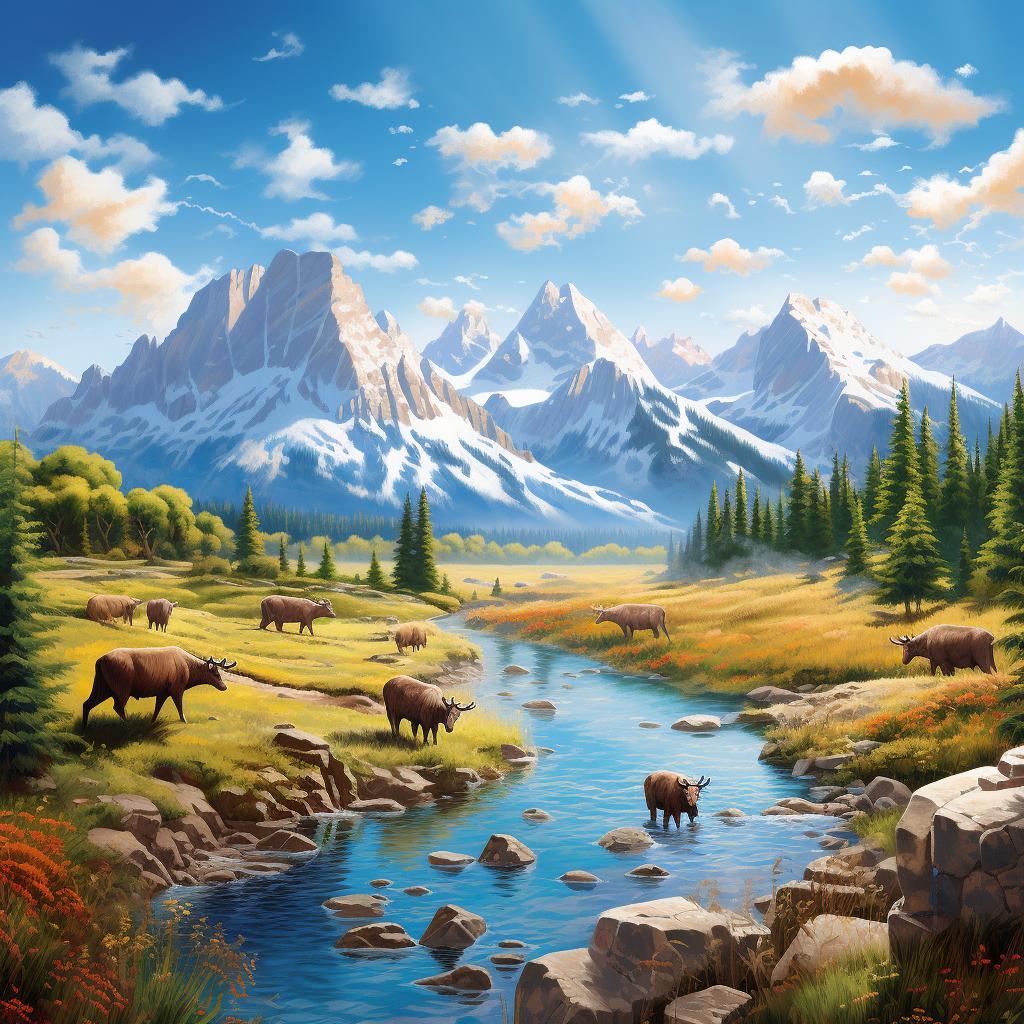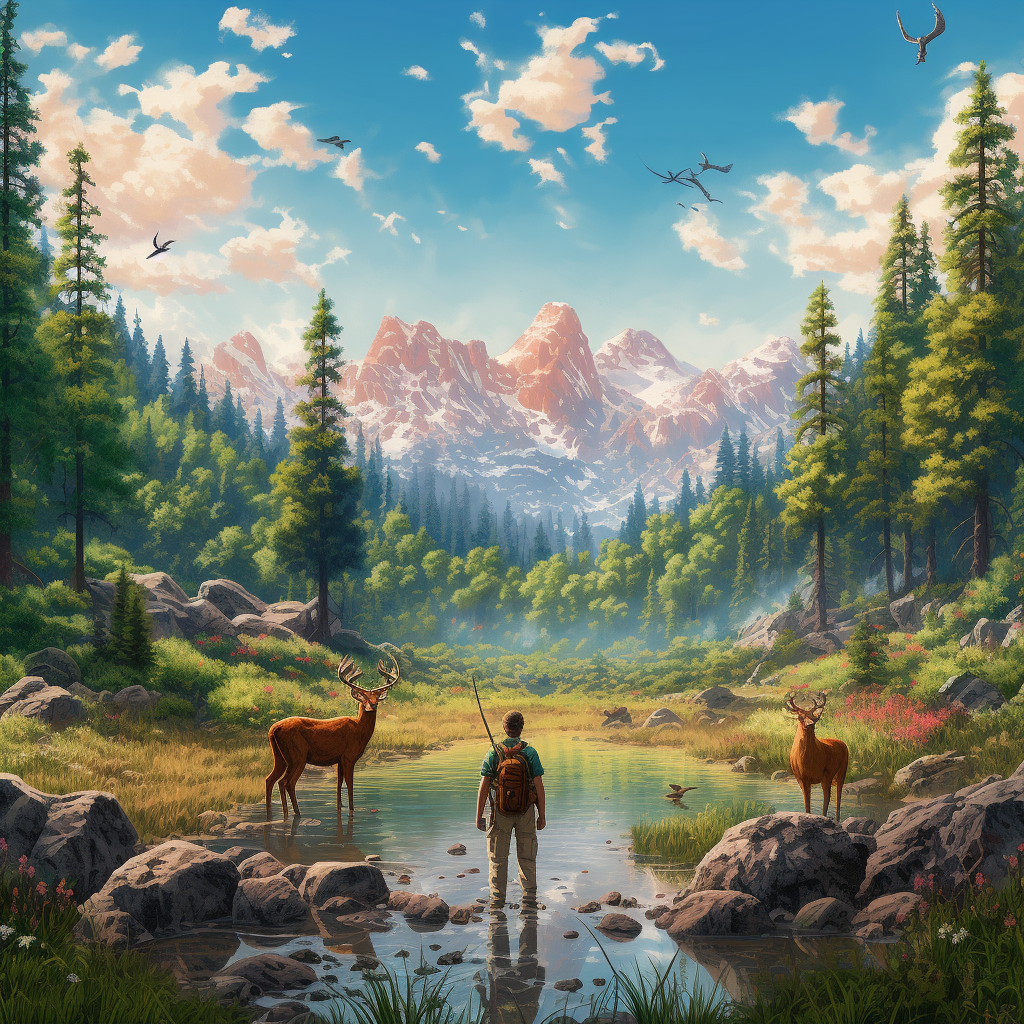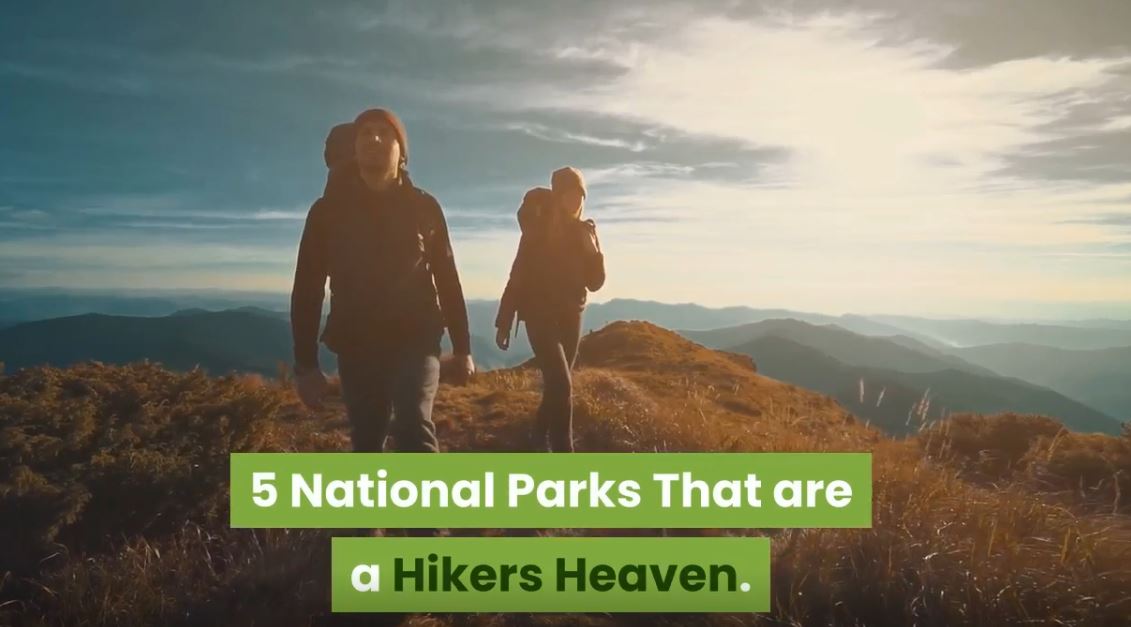Forest & Woodland
Understanding the Elements of Nature

From the dawn of human consciousness, we’ve sought to make sense of the world that envelops us, using our keen intellect and imagination to break down the vast mystery of existence into smaller, understandable parts. One of the most enduring ways we’ve done this is through the concept of the elements of nature.
Elemental Theory: A Historical Perspective
Ancient Greece and the Four Elements

Our story begins with the ancient Greeks. The philosopher Empedocles, born in the fifth century BC, proposed that all matter was composed of four “roots” or elements: earth, air, fire, and water. For Empedocles, these elements were immutable and indestructible, their combinations and separations resulting in the world as we perceive it.
Elements in Eastern Philosophies
In parallel, Eastern cultures conceptualized the elements in their unique ways. The Chinese philosophy, for instance, postulated five elements or Wu Xing – Wood, Fire, Earth, Metal, and Water, which were more process-oriented, symbolizing the constant interplay and transformations witnessed in nature.
The Five Elements of Nature
Earth: The Foundation of Life

Earth, the first of the elements, represents solidity and support. From towering mountains to the sand beneath our feet, Earth’s essence is stability. It’s the soil that nourishes the seed, the rock that offers shelter, the land that hosts myriad life forms.
Water: The Element of Sustenance
Next comes Water, the flowing life-giver. From the vast, undulating oceans to the tiny dewdrop on a leaf, water embodies change, adaptability, and sustenance. It’s in the blood coursing through our veins, the sap in plants – a symbol of life and renewal.
Air: The Breath of Life
Air, often the most overlooked of the elements, is essential to life. The invisible yet palpable wind, the breath that sustains us, the gale that can reshape landscapes – Air embodies freedom, intellect, and invisibility.
Fire: The Force of Transformation
Fire, unlike the other elements, does not exist in a natural state. It needs interaction, a spark. Fire is the embodiment of transformation – it brings light, consumes materials, and transforms them into heat and ash. Fire represents energy, passion, and divine inspiration.
Space: The Cosmic Canvas
Finally, we have Space or Ether, which stands for the boundless, the container for all things. It’s the vast night sky, the feeling of emptiness in a room, the silent expanse of the universe. Space is the stage on which the dance of creation and destruction, the interplay of
elements, unfolds. It represents infinity, emptiness, and possibility, providing room for the existence and movement of the other elements.
The Significance of the Elements

These elements, individually and collectively, have profound significance. They’re not just physical phenomena but also represent different states of matter and aspects of life. They form a lens through which we understand and engage with the natural world, and they’re fundamental to various spiritual and philosophical systems. The interconnection and balance among these elements are key to maintaining harmony in nature and life.
The Interplay of Elements in Nature
Observe nature, and you’ll see these elements at work, complementing and competing with each other, creating a dynamic balance. A forest fire (fire) consumes trees (earth) and is quelled by rain (water), leading to new growth. Winds (air) shape landscapes and clouds, carrying seeds across vast distances. And all this activity takes place within the all-encompassing space.
In human life, the elements represent various physical and emotional states, influencing health, personality, and behavior. Traditional Chinese and Ayurvedic medicine, for instance, emphasize balancing these elemental forces within the body for optimal health and well-being.
Conclusion
So, what are the elements of nature? They are the fundamental concepts that help us understand and connect with the world around us. Earth, Water, Air, Fire, and Space – these elements bind us to our world, reminding us that we are a part of a complex and beautiful system, ever dynamic, ever harmonious. By understanding these elements, we understand nature, and ultimately, ourselves better.
Frequently Asked Questions
- What is the importance of the elements in traditional medicine? In systems like Ayurveda and Traditional Chinese Medicine, the balance of elements in the body is crucial for health. Imbalance may lead to disease, and treatments aim to restore this equilibrium.
- Do all cultures recognize the same elements? No, different cultures identify different elements. For instance, the ancient Greeks recognized four, while Chinese philosophy includes five. However, despite the differences, these elements often have striking similarities in symbolism and significance.
- Can these elements be taken literally? While these elements correspond to physical phenomena (solidity, fluidity, etc.), they are primarily symbolic, representing different states of matter and aspects of life.
- What does it mean to balance the elements in one’s life? Balancing elements in life means nurturing all aspects represented by these elements – physical health (Earth), emotions and adaptability (Water), intellectual pursuits and freedom (Air), passion and transformation (Fire), and mindfulness and openness (Space).
- How do the elements relate to environmental conservation? The idea of elemental balance underscores the importance of preserving diverse ecosystems. Destruction or pollution of any one element can disrupt this balance, leading to environmental harm. Conservation efforts aim to protect and restore this natural balance.
Forest & Woodland
Which State Has the Most National Parks: A Deeper Exploration

National parks: the invaluable guardians of our planet’s natural beauty, biodiversity, and rich cultural heritage. These magnificent treasures spark a question that echoes in the minds of many: “Which state has the most national parks?” To answer this query, let’s embark on a detailed journey across America’s awe-inspiring and diverse landscapes.
Understanding National Parks
The Genesis of National Parks in the USA

Our journey begins with the birth of the concept of national parks, an idea that was born and raised in the USA. Yellowstone National Park, established in 1872, marked the inception of the global national park movement. This grand park, with its geysers and hot springs, sprawling forests and diverse wildlife, set a precedent for preserving significant natural, cultural, and historical sites for future generations.
National parks offer an essential refuge from the hustle and bustle of urban life, providing tranquil sanctuaries where nature reigns supreme. Over the years, more areas of outstanding natural beauty were recognized, protected, and eventually added to the national park system.
The Value of National Parks
National parks play an integral role in conservation, acting as the custodians of diverse ecosystems and endangered species. They offer essential habitats and protection to wildlife, ensuring the continuation of our planet’s rich biodiversity. Moreover, national parks also act as critical carbon sinks, playing a significant role in climate change mitigation.
Besides their environmental contributions, national parks offer a multitude of recreational and educational opportunities. They provide open-air classrooms where both children and adults can learn about ecology, geology, history, and culture. Through direct experiences with the natural world, national parks instill an appreciation for nature and inspire environmental stewardship.
The Contenders for the Most National Parks

Alaska’s Wild Beauty
Alaska, with its vast wilderness, spectacular landscapes, and low population density, might seem the obvious front-runner when it comes to the number of national parks. This rugged northern state is home to an impressive 8 national parks, including the sprawling Denali and the tranquil Glacier Bay.
These national parks serve as a testament to the state’s wild beauty, offering visitors breathtaking vistas and close encounters with wildlife. From witnessing the majesty of grizzly bears and moose in their natural habitats to exploring the towering peaks and expansive tundra, Alaska’s national parks are a haven for nature lovers and adventure seekers alike.
California: Diversity in Landscape
Meanwhile, the Golden State, California, also throws its hat into the ring, with its wide variety of breathtaking landscapes. California boasts everything from the rugged peaks of the Sierra Nevada mountains and the serene coastline of Point Reyes to the arid expanses of Death Valley and the lush vineyards of Napa Valley.
The diverse range of ecosystems in California makes it an ideal contender for the state with the most national parks. Each park encapsulates a unique piece of California’s natural splendor, inviting visitors to explore its verdant forests, sandy beaches, picturesque valleys, and imposing mountain ranges.
The Champion: California
Exploring California’s National Parks
To the surprise of many, the title of “the state with the most national parks” goes to California, with a grand total of nine. Each of these parks offers a unique facet of nature’s grandeur, capturing a piece of the state’s varied landscape.
From the towering sequoias in Sequoia National Park that stand as living reminders of bygone eras, to the striking desertscapes in Joshua Tree that seem to be plucked straight from a Salvador Dali painting, the national parks in California offer unmatched biodiversity and panoramic beauty. Yosemite National Park, with its magnificent cliffs and cascading waterfalls, attracts millions of visitors each year.
Preserving California’s Natural Heritage
These national parks preserve more than just the physical beauty of the Californian landscape. They protect a rich tapestry of life, safeguarding the state’s natural heritage. Be it the varied bird species making their nests high in the giant sequoias or the delicate desert wildflowers that bloom in Anza-Borrego, California’s national parks are critical for the preservation of the state’s biodiversity.
In addition, these parks protect key historic and cultural sites. From ancient Native American dwellings to preserved mining towns, they ensure the preservation of California’s colorful and intricate human history.
Appreciating National Parks Beyond Numbers

Alaska’s Expansive Wilderness
While California holds the title for the most national parks, it’s essential to look beyond just the numbers. Alaska, for instance, may have fewer national parks, but it boasts the largest area of national parkland. The vast Wrangell-St. Elias National Park and Preserve alone encompasses a mind-boggling 13.2 million acres, making it larger than each of the nine smallest states in the US!
Alaska’s national parks are wild and largely undeveloped, offering intrepid explorers vast tracts of pristine wilderness. These parks, largely untouched by human influence, offer an unparalleled opportunity to witness the raw beauty and grandeur of nature.
Diverse Offerings Across the States
Let’s not forget the numerous national parks scattered across the other states, each offering its unique allure. The ethereal landscapes of Utah’s “Mighty 5” national parks, the geysers of Yellowstone in Wyoming, the gigantic saguaros of Arizona’s Saguaro National Park, and the tropical rainforests of Hawaii’s national parks all underscore the diverse beauty of America’s natural landscape.
In essence, every national park, regardless of the state it resides in, is a gem in its own right, contributing to the collective treasure that is America’s natural heritage.
Conclusion: More Than Just a Number
So, while California holds the title for the state with the most national parks, it’s clear that every state contributes uniquely and importantly to our country’s rich collection of protected lands. The variety of experiences that these parks offer, from witnessing the Northern Lights in Alaska to marveling at the giant sequoias in California, is astounding. National parks are a testament to the diverse and spectacular natural beauty that the USA is fortunate to possess, regardless of the quantity each state has.
National parks underscore the fact that the true value of these protected areas cannot be measured by numbers alone. It’s the experience they offer, the memories they help create, and the precious ecosystems they protect. Whether you’re in the Californian wilderness or exploring the rugged beauty of Alaska, the goal remains the same: to appreciate, conserve, and learn from these extraordinary places.
Frequently Asked Questions
- Do all states have national parks? No, not all states have national parks. As of the last update, 29 states have at least one national park.
- Are national parks free to enter? While some national parks offer free entry, others charge a fee. However, the National Park Service offers several “fee-free” days throughout the year.
- How can I support national parks? There are many ways to support national parks, from following the “leave no trace” principles when visiting, to volunteering, donating to park organizations, or even purchasing a national park pass.
- What is the largest national park in the USA? The largest national park in the USA is Wrangell-St. Elias National Park in Alaska. It’s bigger than each of the nine smallest states in the US!
- Can you live in a national park? While you can’t live permanently in a national park, there are options for camping, both in designated campgrounds and in certain backcountry areas with a permit.
- Why does California have the most national parks? California has a rich diversity of ecosystems, from its expansive deserts to its coastal regions, verdant forests, and towering mountain ranges. This variety has led to a high number of designated national parks to preserve these distinct areas.
- Are national monuments the same as national parks? National monuments and national parks are both protected lands, but they are designated by different authorities and for different reasons. National parks are designated by Congress for their scenic, inspirational, educational, and recreational value. National monuments are designated by Presidents for their historical, cultural, and scientific interest.
- Which national park is the most visited in the United States? The Great Smoky Mountains National Park, straddling the border of North Carolina and Tennessee, is the most visited national park in the United States.
- Can I bring my pet to a national park? Rules vary depending on the park. In general, pets are allowed in most national parks but must be kept on a leash at all times and are not allowed on most trails and in public buildings.
- What activities can I do in a national park? Activities vary from park to park but can include hiking, biking, camping, wildlife viewing, fishing, and attending ranger-led programs. Always check with the specific park for a list of permitted activities.
Forest & Woodland
Understanding nature preserves

Understanding Nature Preserves
Nature is a marvel, a treasure chest full of diverse species and ecosystems. Its conservation, hence, is of paramount importance. This brings us to the question, what is a nature preserve?
What is a Nature Preserve?
A nature preserve, also known as a nature reserve, is an area of land or water set aside for the protection and conservation of wildlife, flora, fauna, and other resources of the environment that are of significant ecological, educational, or aesthetic value. These areas are designated under various names worldwide, such as national parks, wildlife refuges, or natural monuments.
The Importance of Nature Preserves
Biodiversity Conservation
Nature preserves play a crucial role in maintaining biodiversity by providing a sanctuary for species. They serve as the last refuge for many endangered species, allowing them to live, reproduce, and thrive away from human interference.
Ecosystem Services
Preserves not only safeguard biodiversity, but they also help maintain ecosystem services. These include water purification, climate regulation, nutrient cycling, and pollination—functions that are vital for human survival and prosperity.
Cultural Significance
Nature preserves often have deep cultural and spiritual significance for local communities. They can preserve historical sites and offer opportunities for cultural education and recreation.
Different Types of Nature Preserves

National Parks
National parks are large protected areas open for the public to enjoy. They often include significant natural features such as mountains or forests, and diverse wildlife.
Wilderness Areas
Wilderness areas are regions where human influence is minimal. They are often inaccessible and offer the highest level of protection for pristine ecosystems.
Wildlife Reserves
Wildlife reserves primarily focus on the protection of specific species or habitats. They can include breeding programs for endangered species and may be private or government-owned.
How to Support Nature Preserves

Supporting nature preserves can take on many forms. It could be as simple as visiting preserves, volunteering time, making a donation, or advocating for conservation policies. Each of us can contribute in some way.
Nature Preserves around the World
From the Serengeti in Africa, Yellowstone in the U.S., to the Great Barrier Reef in Australia, nature preserves around the world are fascinating places that contribute to our planet’s health and highlight the importance of conservation.
Conclusion
Nature preserves are critical in safeguarding the world’s biodiversity, offering ecosystem services, and providing cultural value. They come in many forms, and we all can play a part in their preservation.

FAQs
1. What’s the difference between a nature preserve and a park? A park is generally an area set aside for human recreation and enjoyment, often located within urban areas, while a nature preserve is primarily
dedicated to the protection and preservation of wildlife, flora, fauna, and other natural resources.
2. Are nature preserves open to the public? While many nature preserves are open to the public for purposes such as education and controlled recreation, some are strictly off-limits to protect certain species or habitats.
3. How are nature preserves funded? Nature preserves are typically funded through a combination of government budgets, private donations, grants, and visitor fees.
4. Can I volunteer at a nature preserve? Yes, many nature preserves welcome volunteers. Volunteering roles can range from visitor services and education to fieldwork and habitat restoration.
5. Why are nature preserves important for climate change? Nature preserves help mitigate climate change by protecting areas that absorb greenhouse gases, like forests and wetlands. They also preserve biodiversity, which is crucial for resilience in the face of climate change.
Parks and Reserves Across the United States
| No | Nature Preserve | State | City/Region | Website |
|---|---|---|---|---|
| 1 | Acadia National Park | Maine | Bar Harbor | nps.gov/acad |
| 2 | Everglades National Park | Florida | Miami, Naples, and Homestead | nps.gov/ever |
| 3 | Joshua Tree National Park | California | Riverside County | nps.gov/jotr |
| 4 | Rocky Mountain National Park | Colorado | Estes Park and Grand Lake | nps.gov/romo |
| 5 | Yellowstone National Park | Wyoming, Montana, Idaho | Primarily in Wyoming | nps.gov/yell |
| 6 | Yosemite National Park | California | Mariposa County | nps.gov/yose |
| 7 | Grand Canyon National Park | Arizona | Coconino and Mohave counties | nps.gov/grca |
| 8 | Shenandoah National Park | Virginia | Madison County | nps.gov/shen |
| 9 | Cuyahoga Valley National Park | Ohio | Brecksville | nps.gov/cuva |
| 10 | Smoky Mountains National Park | North Carolina, Tennessee | Swain & Haywood Counties, NC; Sevier, Blount & Cocke Counties, TN | nps.gov/grsm |
| 11 | Great Smoky Mountains National Park | Tennessee, North Carolina | Gatlinburg, TN; Cherokee, NC | nps.gov/grsm |
| 12 | Glacier National Park | Montana | Flathead County | nps.gov/glac |
| 13 | Olympic National Park | Washington | Port Angeles | nps.gov/olym |
| 14 | Death Valley National Park | California, Nevada | Inyo County, CA; Nye County, NV | nps.gov/deva |
| 15 | Zion National Park | Utah | Springdale | nps.gov/zion |
| 16 | Sequoia National Park | California | Tulare County | nps.gov/seki |
| 17 | Bryce Canyon National Park | Utah | Garfield County and Kane County | nps.gov/brca |
| 18 | Haleakala National Park | Hawaii | Maui | nps.gov/hale |
| 19 | Denali National Park | Alaska | Denali Borough and Matanuska-Susitna Borough | nps.gov/dena |
Forest & Woodland
5 national parks that are a hikers heaven

In this video, we’ll discover five national parks that are on most hikers’ bucket list. Hiking in nature is one way to connect with it. It’s also a way to help improve your own self.
Through our research the 5 national parks that are a hikers heaven are Yellowstone Park, Yosemite, Grand Canyon, Glacier National Park, & Zion National Park.
Watch This 5 National Parks are a hikers heaven here.
-

 Forest & Woodland9 months ago
Forest & Woodland9 months agoUnderstanding nature preserves
-

 Forest & Woodland9 months ago
Forest & Woodland9 months agoWhich State Has the Most National Parks: A Deeper Exploration
-

 Forest & Woodland3 years ago
Forest & Woodland3 years ago5 national parks that are a hikers heaven
-

 Sound Healing3 years ago
Sound Healing3 years agoWhat is binaural beats healing?
-

 Forest & Woodland3 years ago
Forest & Woodland3 years agoRelaxing Woods Music – 8 hours of relaxing music and nature sounds.
-

 Nature Sounds3 years ago
Nature Sounds3 years ago10 hours of relaxing sound of a stone mountain stream
-

 Campfire Videos3 years ago
Campfire Videos3 years ago3 Hours Of Relaxing Fire Burning In the Fireplace Video
-

 Short Nature Videos3 years ago
Short Nature Videos3 years agoCollection of beautiful waterfalls, nature sounds, & relaxing music



